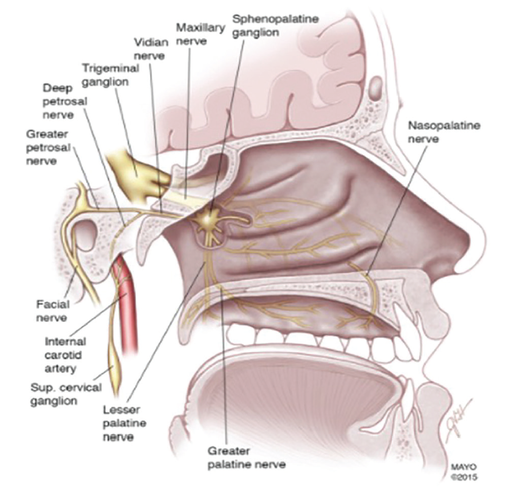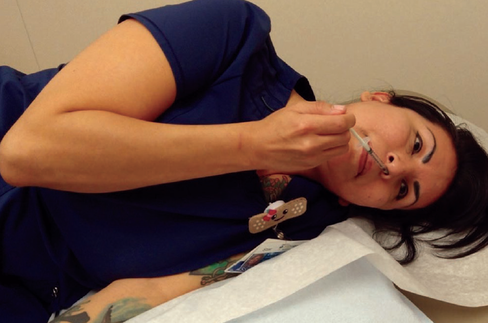Sphenopalatine Ganglion (SPG) Block
The SPG is a parasympathetic ganglion, situated in the pterygopalatine fossa, primarily derived from the greater petrosal nerve. The major afferent distribution of the SPG includes the entire nasopharynx and important connections with the trigeminal nerve, facial nerve, and internal carotid artery plexus of the sympathetic nervous system, as well as the lacrimal gland and nasal mucosa.
Clinical uses:
- Sphenopalatine neuralgia
- Trigeminal neuralgia
- Atypical facial pain
- Cluster headache
- Migraine with aura,
- Contraindications or lack of response to triptans/gepants,
- Children or adolescents if preferred to oral medication
- Pregnant women
- Frontotemporal headache refractory to acute therapy.
Viscous lidocaine 2% is used— rather than topical lidocaine 4%—with postioning of the head to allow the lidocaine to reach the sphenopalatine fossa.

Position for self-administered SPG block. In a decubitus position, headache side down with shoulder on and the head off of a pillow. The head is laterally flexed and rotated about 30 degrees. The tip of the syringe is pointing towards and gently touching the lateral wall of the nares.
Technique for SPG Block with Catheter for Patients (at home)
Sphenopalatine Ganglion Block Without Catheter
Unique technique allows self-administration of sphenopalatine ganglion block.
By Morris Maizels, MDpn0521_cf4_spgblock.pdf
Unique technique allows self-administration of sphenopalatine ganglion block.
By Morris Maizels, MDpn0521_cf4_spgblock.pdf
At Home SPG Block
Supplies may not be available.
